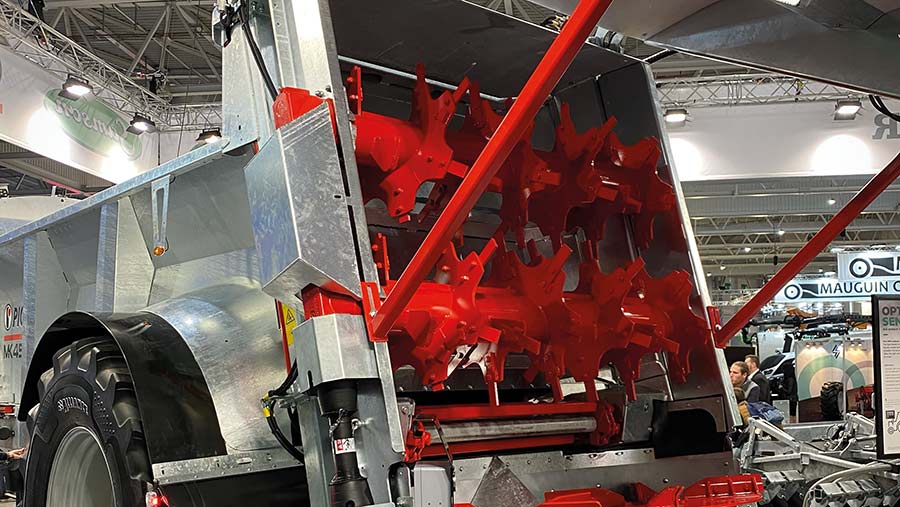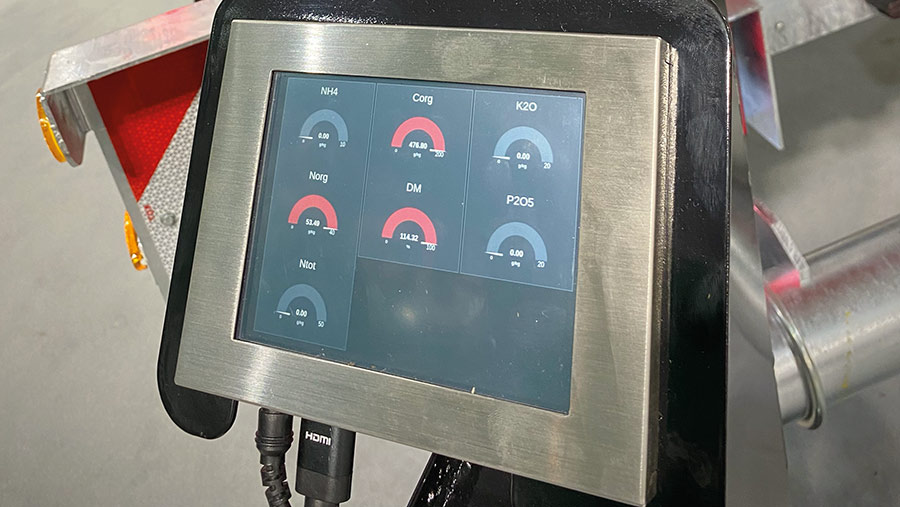Sima 2022: Pichon Opti-Sensor monitors muck nitrogen content
 © MAG/Oliver Mark
© MAG/Oliver Mark Farmers could soon have the power to exploit the full potential of muck, with Pichon nearing the completion of a four-year project to develop a means of monitoring the nutritional value of farmyard manure and compost during spreading.
The near-infrared spectrometer developed by British specialist Photon Lines assesses the dry matter, nitrogen, potassium and phosphorus content of solid material as it passes a light-emitting box mounted on the wall of Pichon’s MK 45 spreader.
This occurs 10 times every second and the results are displayed on a screen in the cab, giving the operator a running report on the material’s make-up – in a similar fashion to the near-infrared systems employed on slurry tankers.
See also: How slurry and forage analysis is benefiting from NIR tech

© MAG/Oliver Mark
However, rather than providing a direct reading of each constituent, the information is compared with a vast database of different muck types compiled by some keen beans at Inrae (the French Institute for Agronomic Research).
This allows owners to track applications in more detail and, in time, will open up the option of adjusting the rate to follow a particular nutrient prescription.
Pichon reckons it has nitrogen, carbon and dry matter calculations accurate to within 5-10%, and potassium and phosphorous to 15-20%.
Interestingly, it also says its trials have shown solid muck to be surprisingly homogenous in its nutritional value, with little variation within loads.
The Opti-Sensor system is still a prototype, but Pichon expects to have it available within the next couple of years and intends to make it cheaper than John Deere’s Harvest Lab – possibly around the €15,000-€20,000 (£13,000-£17,500) mark.

